Golf simulators have become a game-changer in the world of golf. Whether you’re a professional golfer looking to sharpen your skills or a hobbyist seeking to enjoy the game from the comfort of your home, golf simulators offer an unparalleled experience. This comprehensive guide aims to cover everything you need to know about golf simulators, from understanding what they are to choosing, setting up, and using them effectively. So grab your virtual clubs and let’s dive in!
What Are Golf Simulators?
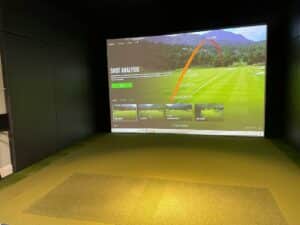
A golf simulator is a system that allows you to play golf on a graphically or photographically simulated driving range or golf course. It is a technology that combines various hardware and software components to simulate the golf experience in a controlled environment.
Brief History and Evolution
Golf simulators have come a long way since their inception in the early 1970s. The first simulators were rudimentary, offering basic visual representations of the golf course. Today’s simulators are highly sophisticated, utilizing advanced technologies like 3D graphics, motion sensors, and artificial intelligence.
- 1970s: Introduction of basic golf simulation technology.
- 1980s: Improvement in graphics and introduction of sensors.
- 1990s: Integration of real-world physics and advanced analytics.
- 2000s: Rise of high-definition graphics and immersive experiences.
- 2010s: Incorporation of virtual reality and cloud-based services.
Golf simulators have undoubtedly come a long way since their inception in the early 1970s. The concept of simulating golfing experiences within a confined space was a groundbreaking idea at the time. However, it was the efforts of companies like “Computer Golf!” that brought the first commercially available golf simulator to the market in the mid-1970s. These early simulators, though rudimentary by today’s standards, laid the foundation for future advancements in the technology.
Throughout the 1980s, golf simulation technology improved significantly. Graphics became more refined, allowing players to experience a clearer representation of the golf course. The visuals advanced from simple line drawings to more detailed 2D representations, making the virtual golfing experience more engaging. Additionally, motion sensors were introduced, enabling players to interact with the virtual environment more realistically. By swinging a real golf club, players could control their virtual shots, which added an element of physicality and immersion to the experience.
In the 1990s, golf simulators reached another milestone with the integration of real-world physics and advanced analytics. Developers began to focus on accurately representing the physics of golf shots, including ball trajectory, spin, and bounce. This level of realism greatly enhanced the training potential of golf simulators, allowing players to fine-tune their swings with data-driven insights and precise feedback. Golfers could now analyze their shots’ launch angles, spin rates, and other metrics to improve their performance on the course.
The 2000s marked a significant leap forward with the rise of high-definition graphics and immersive experiences. The visual quality of the simulated courses became more lifelike, capturing the intricate details of each golf course with stunning realism. Players could now feel as if they were actually playing on the fairways of famous golf courses around the world. This level of immersion improved the overall experience and elevated the training value by making it easier for golfers to visualize their shots and strategies, honing their mental game alongside their physical skills.
In the 2010s, golf simulators embraced virtual reality (VR) and cloud-based services, pushing the boundaries of the golfing experience even further. VR technology allowed golfers to step even deeper into the virtual world, enhancing the sense of presence and engagement. Players could now “walk” the course, experiencing each hole from various angles, and gauge distances with unparalleled accuracy. Moreover, the advent of cloud-based services facilitated seamless updates and access to a vast library of courses from various locations, further broadening the possibilities for golfers to explore and train on different golf courses without leaving their simulators.
How They Work: Technology Behind Simulating the Golf Experience
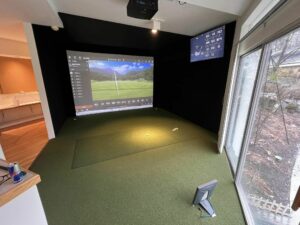
Golf simulators rely on a combination of technologies to create a realistic golfing experience:
1. Sensors
Sensors are used to track the movement of both the golf club and the ball. This is a critical aspect of the simulation, as it allows the system to accurately replicate the golfer’s actions within the virtual environment.
- Club Movement: Sensors can detect the speed, angle, and direction of the club’s swing. This information is used to determine how the virtual ball will behave when struck.
- Ball Movement: Once the ball is hit, sensors track its speed, spin, and trajectory. This data is used to simulate the ball’s flight within the virtual environment.
2. Projectors and Screens
Projectors and screens are used to visually represent the virtual golf course. This is where the golfer sees the simulated environment.
- Projectors: These devices project the virtual golf course onto a large screen. The quality and resolution of the projector can significantly impact the realism of the simulation.
- Screens: The screens are specially designed to handle the projection and often have properties that enhance the image, such as anti-glare coatings. They also need to be durable to withstand the impact of real golf balls if the simulator allows for that.
3. Software
The software is the brain behind the golf simulator. It takes the data collected by the sensors and uses it to simulate the physics of golf.
- Ball Flight: The software calculates how the ball would travel based on the swing data, considering factors like air resistance and gravity.
- Wind and Terrain: The software can also simulate environmental factors like wind direction and speed, as well as the terrain of the virtual golf course. This adds another layer of realism to the experience.
- Graphics: High-quality graphics are essential for an immersive experience. The software must render the virtual golf course in a way that looks and feels real.
4. Input Devices
Input devices allow the golfer to interact with the system, providing a more engaging and user-friendly experience.
- Selection Tools: These might include touchscreens or physical buttons that allow the golfer to select clubs, view the scorecard, or make other choices within the simulation.
- Interactive Elements: Some simulators might include additional interactive elements like foot pedals or voice commands to further enhance the experience.
Types of Golf Simulators
Golf simulators can be broadly categorized into two types:
-
Indoor Golf Simulators: Designed for use inside a building, these simulators offer a controlled environment where everything from wind to lighting can be adjusted.

-
Outdoor Golf Simulators: These are portable and can be set up outside, offering a more natural golfing experience but with less control over environmental factors.

Comparison of Indoor vs. Outdoor Simulators
| Feature | Indoor Simulators | Outdoor Simulators |
|---|---|---|
| Environment | Controlled | Natural |
| Portability | Less Portable | More Portable |
| Price | Generally Higher | Generally Lower |
| Customization | More Options | Fewer Options |
Benefits of Using Golf Simulators
Improvement in Skills and Techniques
Golf simulators offer a controlled environment where players can focus on specific aspects of their game. Whether it’s perfecting a swing, working on alignment, or practicing putting, simulators provide immediate feedback and analytics that can lead to significant improvements.
Convenience and Accessibility
With a golf simulator, you can play golf regardless of the weather or time of day. It offers the convenience of playing and practicing from the comfort of your home or office, saving travel time to and from the golf course.
Fun and Entertainment Value
Golf simulators are not just for serious practice; they can be a source of entertainment as well. With various game modes, multiplayer options, and virtual courses from around the world, they provide endless fun for golfers of all levels.
Analytical Tools and Insights for Serious Golfers
For those looking to take their game to the next level, golf simulators offer advanced analytical tools. These include detailed statistics on swing path, clubface angle, ball speed, and more. Tools like TrackMan provide professional-level insights that can be invaluable for improvement.
Choosing the Right Golf Simulator?
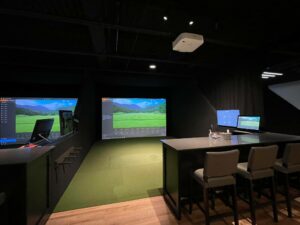
Factors to Consider
1. Budget
- Determine your budget range for the golf simulator. Prices can vary widely, so having a clear budget will help narrow down your options.
- Balance features and cost. Consider which features are essential for your needs and align them with your budget. While high-end models may offer advanced technology and realism, more budget-friendly options can still provide a satisfying experience.
2. Space
- Assess the available space in your home or business for the simulator setup. Some simulators require significant space for swinging the club and setting up the screen and projector.
- Consider room dimensions, including ceiling height and floor space. Ensure there are no obstructions that may interfere with the simulator’s operation.
3. Goals
- Determine the primary purpose of the simulator. Are you looking for serious practice or entertainment?
- If practice is your main goal, consider a simulator with advanced analytics and feedback capabilities to help improve your skills.
- Assess your skill level. Some simulators cater to professionals, while others are more suitable for beginners or casual players.
4. Technology
- Look into the types of sensors used by different simulators. Different sensor technologies offer varying levels of accuracy and realism in the simulation.
- Screen size and quality can significantly impact the immersion of the golfing experience. Consider your preferences for screen size and resolution.
- Explore the available software options. Check the number of virtual courses offered, customization capabilities, and how well it simulates environmental factors like wind and weather conditions.
5. Additional Features
- Some simulators may offer additional features such as multiplayer modes, online competitions, and integration with smart devices. Assess if these features align with your preferences and gaming style.
6. Brand Reputation and Customer Support
- Research the reputation of the simulator brand and read customer reviews to gauge the reliability and quality of the product.
- Consider the availability and quality of customer support from the manufacturer or distributor in case you encounter any issues or need assistance.
Tips for Selecting the Right Model
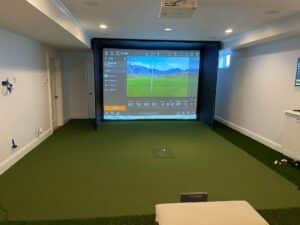
1. Read Reviews
- Seek out reviews from trusted sources such as Golf Digest and other reputable golf publications. These reviews often provide in-depth insights into the performance, features, and pros and cons of various golf simulators.
- User feedback is equally valuable. Look for customer reviews and testimonials to gain practical perspectives from those who have used the simulator firsthand.
2. Try Before You Buy
- Whenever possible, try out the golf simulator in person. Visit stores or demo centers that offer hands-on experiences with different models. This firsthand experience will help you assess the simulator’s performance, graphics quality, and overall user experience.
- Check for compatibility with your physical attributes. Ensure the simulator’s setup accommodates your height, swing speed, and playing style for a more accurate representation of your game.
3. Consider Future Upgrades
- Opt for a simulator that offers scalability and room for future upgrades. As your golfing skills improve, you may want access to more advanced analytics and features. Choosing a system that allows for future expansions can save you from needing to replace the entire setup down the line.
- Evaluate the long-term value of the simulator. A flexible system that can grow with your needs will likely provide better satisfaction and return on investment over time.
4. Warranty and Support
- Review the warranty offered by the manufacturer. A reliable warranty ensures that you’re protected against any potential defects or malfunctions in the early stages of using the simulator.
- Consider the quality of customer support provided by the manufacturer or seller. Prompt and helpful customer support can be invaluable in addressing any technical issues or inquiries that may arise.
5. Consider Customization Options
- Some golf simulators offer customization features, such as adjusting course conditions, weather effects, and difficulty levels. These options can enhance your overall gaming experience and cater to your preferences.
Setting Up Your Golf Simulator
Space Requirements and Considerations
Setting up a golf simulator requires careful planning:
1. Room Size
- The room size must be large enough to accommodate both the golfer’s full range of motion when swinging clubs and the necessary equipment such as screens, sensors, and other hardware.
- The room must allow for a comfortable swing without hitting walls or other obstructions. It should also provide space for spectators or other players if needed.
- Finding a room with enough space might be difficult, especially in a residential setting. It may require rearranging or removing furniture or other items.
2. Ceiling Height
- The ceiling height must be high enough to allow for a full golf swing without the club hitting the ceiling.
- A minimum height of 9-10 feet is usually recommended. This ensures that even with longer clubs and taller players, there is enough clearance.
- In some buildings, especially older ones, the ceiling height might not meet this requirement, making it unsuitable for a golf simulator.
3. Lighting
- Proper lighting is crucial for the sensors to accurately read the movement and position of the golf ball and club. Inconsistent or poor lighting can lead to incorrect data and a less realistic simulation experience.
- The lighting should be bright enough to illuminate the entire playing area but not cause glare on screens or interfere with the sensors. Adjustable lighting might be beneficial to create the optimal conditions.
- Achieving the right balance of brightness and direction of light might require specialized fixtures or adjustments.
4. Flooring
- The flooring used in the golf simulator room should mimic the feel of real turf as closely as possible.
- Specialized golf mats are often used to simulate real turf. These mats can provide the right amount of resistance and feel to make the simulation more realistic.
- The flooring should also be durable enough to withstand repeated swings and be easy to maintain.
- Finding the right mat that fits the budget and provides a realistic feel might require research and testing.
Step-by-Step Guide to Installation
- Choose the Location: Select a suitable space considering the factors mentioned above.
- Set Up the Screen and Projector: Follow the manufacturer’s instructions for proper alignment and distance.
- Install Sensors: Place sensors as directed to accurately track movement.
- Connect to a Computer: Install the software and connect the system to your computer.
- Calibrate the System: Follow the calibration process to ensure accurate readings.
- Test and Play: Test the system with some practice shots and start enjoying your virtual golf experience!
Common Challenges and How to Overcome Them
1. Space Constraints
- Not having enough room for a full-sized golf simulator can be a significant obstacle, especially in smaller homes or apartments.
- Consider portable or compact models that are designed to fit into smaller spaces. These models often have foldable or retractable components that can be stowed away when not in use.
- Utilizing multipurpose rooms or rearranging furniture to create temporary space can also be helpful. Virtual reality (VR) golf simulators might be an option as they often require less physical space.
2. Technical Issues
- Setting up a golf simulator involves various technical aspects, including sensor calibration, screen alignment, software installation, and more. These can be daunting for those not familiar with technology.
- Seek professional installation if you’re not comfortable with the technical aspects. Many companies offer installation services that include setup, calibration, and even training on how to use the system.
- If professional installation is not an option, many manufacturers provide detailed manuals or online tutorials. Enlisting the help of a tech-savvy friend or family member might also be a solution.
3. Budget Limitations
- Golf simulators can be expensive, especially when considering high-end models with advanced features. Budget constraints might limit the options available.
- Consider starting with a basic setup and upgrading over time. Many systems are modular, allowing for gradual enhancements as the budget allows.
- Look for sales, discounts, or refurbished models to save money. Investing in quality essential components first (like sensors and screens) and adding extras later can also be a smart approach.
Tips for Using Golf Simulators Effectively
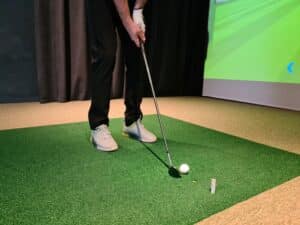
How to Get the Most Out of Your Golf Simulator
To maximize the benefits of your golf simulator, consider the following tips:
Regular Practice: Consistency is key in golf. Regular practice on your simulator can lead to significant improvements. Set a schedule and stick to it, even if it’s just a few minutes a day. The more you practice, the more you’ll improve.
Use Analytics: Take advantage of the data provided by your simulator to understand your strengths and weaknesses. Analyzing your swing, ball speed, and other metrics can provide valuable insights into areas for improvement.
Vary Your Practice: Don’t just play full rounds. Use the simulator to focus on specific aspects of your game, like putting or bunker shots. This targeted practice can lead to more rapid improvement in specific areas.
Play Different Courses: Most simulators offer a variety of virtual courses. Playing different courses can make your practice more fun and challenging. It also helps you adapt to different terrains and conditions.
Practice Routines and Drills
Practice routines and drills are vital for improving golfers’ skills and taking their game to the next level. Whether you are a beginner or a seasoned player, structured practice on a golf simulator can significantly enhance your performance on the course. In this guide, we will explore various practice routines and drills that you can incorporate into your golf simulator sessions.
1. Target Practice: Target practice focuses on improving accuracy and distance control. Choose specific targets on the virtual driving range and aim to hit them consistently. Start with larger targets and gradually reduce the size to challenge yourself. Experiment with different clubs and distances to develop a feel for each club’s capabilities.
2. Fairway Practice: Consistency off the tee is crucial in golf. Play a virtual round on a simulated course but focus solely on hitting fairways. This drill will help you develop control over your tee shots, leading to more opportunities for scoring on subsequent shots.
3. Putting Drills: Putting is the most critical aspect of the game, and golf simulators offer excellent putting practice modes. Work on your short game by focusing on alignment, consistent stroke, and reading virtual greens. Practice from various distances and slopes to improve your distance control and sinking more putts.
4. Chipping and Pitching Drills: Hone your chipping and pitching skills using the simulator’s short game modes. Work on different shot trajectories and landing spots to develop versatility around the greens. This will help you get up and down more often, saving valuable strokes during your rounds.
5. Bunker Play: Take advantage of bunker practice options if available in your simulator. Practice different techniques, such as the splash shot or explosion shot, to become more confident in escaping various sand scenarios on the course.
6. Shot Shaping: Challenge yourself to shape shots intentionally on the simulator. Practice fades, draws, and straight shots with different clubs to gain control over your ball flight. Being able to shape shots will give you an edge on the course, especially when dealing with tricky course layouts or challenging weather conditions.
7. Course Management: Use the golf simulator to play virtual rounds on famous courses or ones you plan to visit in the future. Treat these rounds as real ones and practice course management by strategically selecting clubs and shot types to navigate each hole successfully.
8. Mental Game Practice: Golf is as much a mental game as it is physical. Use your time on the simulator to practice mental exercises, such as visualization and positive self-talk. Imagine yourself executing perfect shots and visualizing success on challenging holes. Additionally, practice maintaining focus and composure during simulated rounds to improve your mental resilience on the course.
9. Video Analysis: If your simulator offers video analysis capabilities, record your swing and review it to identify areas for improvement. Analyze your posture, grip, alignment, and swing mechanics. Use the feedback to make adjustments and track your progress over time.
Utilizing Analytics and Feedback Tools
Modern golf simulators have revolutionized the way golfers analyze and improve their game by offering a wealth of data and insights. Leveraging these analytics and feedback tools effectively can lead to significant advancements in your golf performance. In this guide, we will delve into the key data metrics provided by golf simulators and how you can use them to elevate your game.
1. Swing Path Analysis: One of the most valuable insights provided by golf simulators is the data on your swing path. By reviewing this data, you can identify whether you tend to swing too far inside or outside the ideal swing path. For example, if the data shows a consistent outside-in swing path, you may be prone to slicing the ball. Understanding your swing path tendencies allows you to make necessary adjustments to achieve a more optimal and consistent swing. Work on aligning your swing path with your target line to enhance accuracy and ball-striking consistency.
2. Clubface Angle Evaluation: The clubface angle at impact plays a critical role in determining the flight of your golf ball. Analyzing this data can help you identify if you tend to produce slices or hooks. For instance, if the clubface is open relative to the target line at impact, you are more likely to hit a slice. On the other hand, a closed clubface can result in a hook. Understanding your clubface angle allows you to make corrections to improve your ball flight and minimize mis-hits. Experiment with grip adjustments and swing techniques to achieve a square clubface at impact.
3. Ball Speed and Spin Insights: Ball speed and spin are crucial metrics that provide valuable information about the quality of your contact and the effectiveness of your swing mechanics. A higher ball speed generally indicates more power and distance, while the right amount of spin can influence the trajectory and stopping power of your shots. Analyze the relationship between your swing mechanics and the resulting ball speed and spin. For instance, observe how changes in clubhead speed, angle of attack, and impact position influence ball speed and spin. This process can be highly educational and lead to improved shot control and distance control.
4. Visual Aids and Data Interpretation: To enhance your understanding of the data, consider using visual aids such as charts or diagrams to demonstrate the impact of swing changes on ball flight or spin. Additionally, focus on data interpretation to make informed decisions about your swing adjustments. Work with a golf instructor or use online resources to gain deeper insights into the analytics provided by the simulator.
5. Addressing Challenges and Applying Feedback: Recognize that interpreting the data and making swing adjustments based on the analytics might pose challenges. Be patient and persistent in your efforts to apply the feedback effectively. Seek guidance from experienced golfers or professionals to overcome obstacles and refine your practice routine accordingly.
Safety Considerations and Maintenance Tips
Safety Considerations: Golf simulators provide a fantastic indoor practice experience, but safety should always be a top priority. Here are some key safety considerations to keep in mind:
-
Adequate Swing Space: Ensure that there is enough space around the simulator to swing your clubs freely and safely. Remove any obstacles or fragile items from the vicinity to prevent accidental damage.
-
Secure Mounting of Screen: Make sure that the screen is securely mounted and properly fastened to its frame. A securely mounted screen reduces the risk of accidents and ensures a stable and safe setup.
-
Protective Netting or Barriers: Consider installing proper netting or barriers around the simulator area to protect surrounding walls, windows, or furniture from any errant shots. This added precaution can prevent damage and potential injury to people or property.
-
Footwear and Clothing: Wear appropriate golf shoes or non-marking indoor shoes to maintain stability during swings. Avoid wearing shoes with spikes that could damage the flooring or screen.
Maintenance Tips: Regular maintenance is crucial to ensure the longevity and accurate performance of your golf simulator:
-
Cleaning Sensors and Screen: Regularly clean the sensors and screen with a soft, non-abrasive cloth to remove dust, dirt, and smudges. Keeping these components clean ensures accurate readings and optimal visual experience.
-
Software Updates: Check for and install software updates provided by the simulator manufacturer. These updates often include bug fixes, feature enhancements, and improved performance. Keeping your software up-to-date ensures a seamless and reliable experience.
-
Hardware Inspections: Perform regular inspections of cables, connections, and other hardware components. Look for signs of wear, fraying, or loose connections. Address any issues promptly to prevent unexpected malfunctions or disruptions during use.
-
Climate Control: Maintain a suitable temperature and humidity level in the simulator room. Extreme temperatures or humidity can affect the performance of electronic components. Avoid exposure to direct sunlight, as it can impact screen visibility and sensor accuracy.
-
Protective Covers: When the simulator is not in use, consider using protective covers for the screen and sensors to shield them from dust and potential damage.
Golf Simulators and the Professional World
How Professionals Use Golf Simulators for Training
Many professional golfers use simulators for training. They offer a convenient way to practice regardless of weather conditions and provide valuable data for improving performance. For example, Tiger Woods reportedly has a Full Swing simulator in his home.
Case Studies or Interviews with Professionals Who Use Simulators
- Case Study 1: Jordan Spieth, a three-time major winner, uses a golf simulator to fine-tune his swing and prepare for tournaments.
- Case Study 2: Jason Day, former world number one, uses a simulator to practice different shots and courses in preparation for events.
Impact on the Golf Industry
-
Increased Accessibility: Golf simulators have made the sport more accessible to a broader audience. Players no longer need to be near a golf course to enjoy the game. Simulators have allowed golf to be played in various indoor settings, making it available to people in urban areas or regions with limited golf courses.
-
Year-Round Play: Weather conditions often limit outdoor golfing opportunities, especially in colder climates. Golf simulators provide the solution, enabling golfers to play and practice year-round, regardless of weather conditions.
-
Practice and Improvement: Golf simulators have become invaluable tools for golfers seeking to improve their skills. With detailed analytics and feedback, golfers can fine-tune their swings and develop better shot control, ultimately enhancing their performance on the course.
-
Entertainment and Socializing: Beyond improving skills, golf simulators offer entertaining experiences for both avid golfers and newcomers. They have become popular attractions in entertainment venues, allowing friends and families to enjoy golf together in a fun and social setting.
-
Growth of Indoor Golf Centers: The rise of golf simulators has led to the establishment of indoor golf centers that offer a wide range of services, including simulated golf courses, golf lessons, club fitting, and social events. These centers have contributed to the growth of the golf industry and attracted new players.
Future Trends
As technology continues to advance, the future of golf simulators looks promising, with several trends on the horizon:
Virtual Reality (VR) and Augmented Reality (AR): VR and AR technologies are likely to be integrated into golf simulators, offering even more realistic and immersive experiences. Players may soon find themselves virtually transported to iconic golf courses worldwide, enhancing the sense of presence and realism.
Real-Time Multiplayer Modes: Expect the development of real-time multiplayer modes that enable golfers to compete with others remotely. This will foster a sense of competition and camaraderie among players, regardless of their physical locations.
Enhanced Data Analytics: Future golf simulators may provide more advanced data analytics, including AI-driven insights on swing mechanics, shot selection, and course management. These personalized recommendations can help golfers optimize their strategies and improve their overall game.
Integration with Smart Devices: Golf simulators may become more integrated with smart devices, allowing seamless connectivity and synchronization with golfing apps, wearable devices, and other golf-related technologies.
Home Simulator Integration: With advancements in technology and affordability, golf simulators are likely to become more common in home setups. This will further enhance the accessibility and convenience of practicing golf whenever desired.
Golf simulators offer a fantastic way to enjoy golf from the comfort of your home or office. Whether you’re a serious golfer looking to improve your game or a casual player seeking some fun, a golf simulator can cater to your needs. We hope this guide has provided you with a comprehensive understanding of golf simulators and will help you make an informed decision. So why wait? Start your virtual golfing journey today!